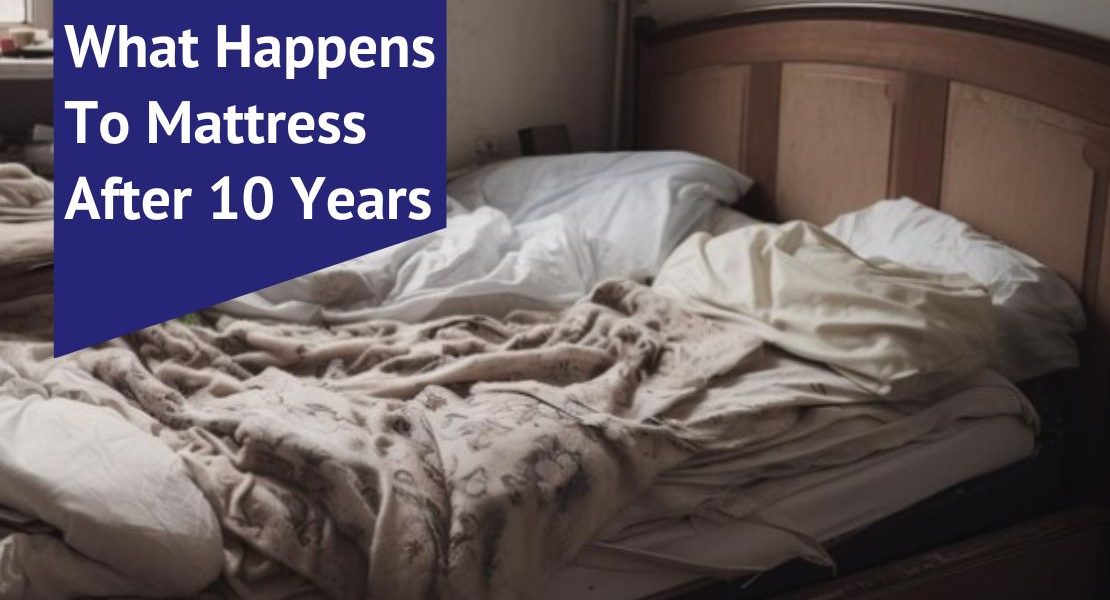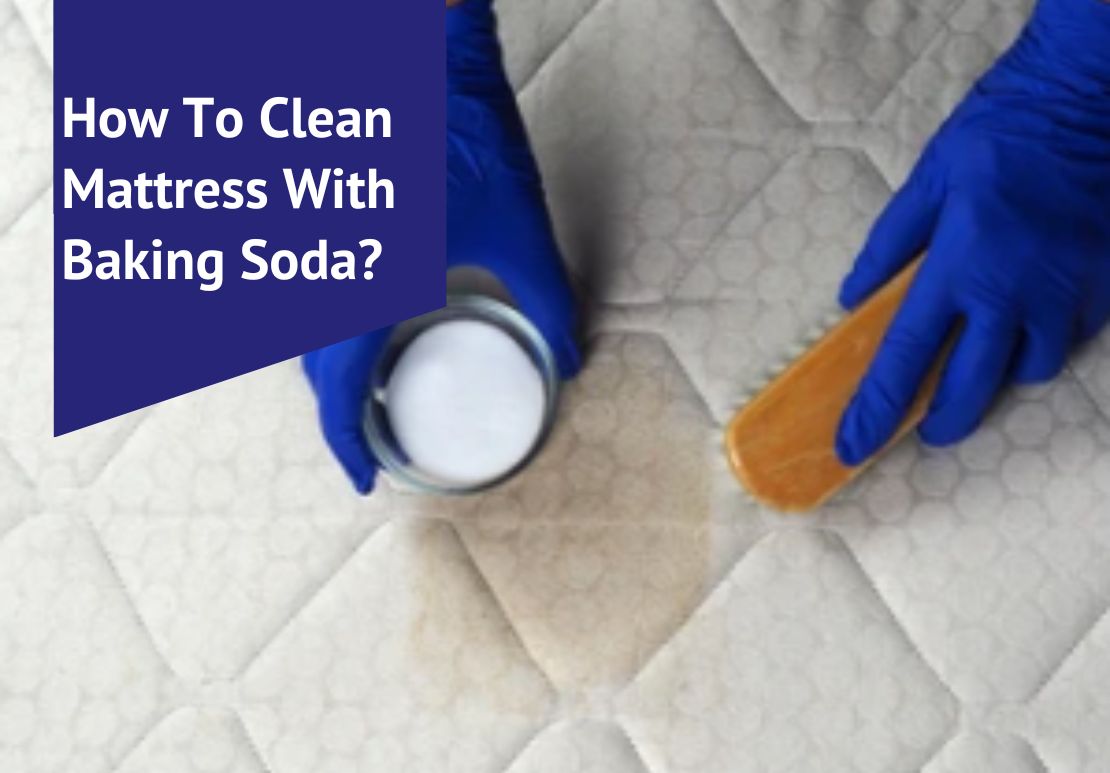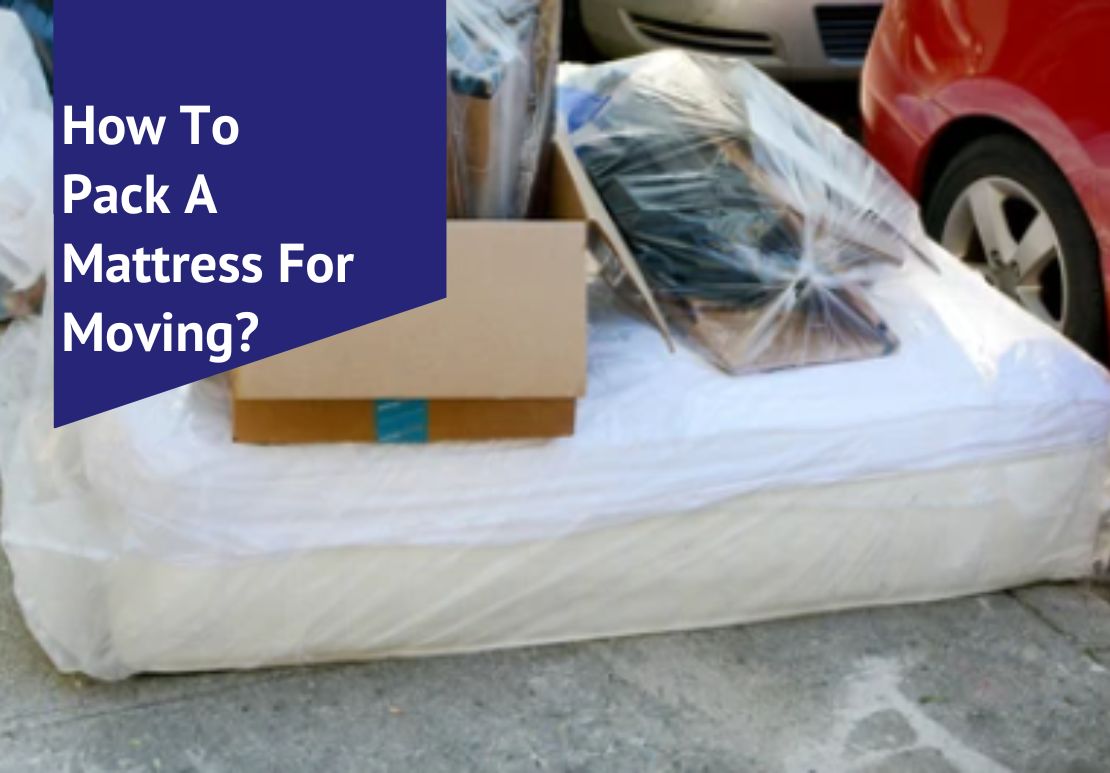Are you aware of what happens to your mattress after 10 years? It’s a surprising fact that mattresses accumulate dust mites and skin cells over this period, potentially affecting your health. Therefore, proper care and maintenance are essential to keep both your health and matters in the best condition.
This article takes an in-depth look at the lifespan of a mattress, highlighting signs for replacement and offering solutions for proper disposal or eco-friendly replacements. Keep reading to sleep healthier and more sustainably!
Table of Contents
Key Takeaways
- Mattresses typically last around 7 – 10 years, depending on factors like body weight and usage.
- Signs that your mattress may need replacing include sagging or lumps, waking up with aches and pains, visible wear and tear, and increased allergies or respiratory issues.
- Sleeping on an old mattress can lead to health problems such as allergies from dust mites and skin cell buildup, increased risk of back pain, and poor sleep quality.
- Proper disposal options for old mattresses include recycling or donating them. You can also choose eco-friendly replacements made from natural latex, organic cotton, plant-based foam, wool, or recycled materials.
Life Expectancy of a Mattress
The typical lifespan of a mattress is around 7-10 years, depending on various factors such as body weight, usage, and quality.
Typical lifespan of 7-10 years
Most mattresses last about seven to ten years. This is the time when they work best and feel most comfortable. The length of time a mattress lasts can change based on different things though.
These may include how much it is used, the weight of the person using it, and its quality. But after around ten years, a mattress often starts to show signs that it’s old and worn out. To prevent the quality of the mattress from getting damaged, you can use a mattress protector or a mattress cover.
Factors that affect lifespan (body weight, usage, quality)
Many things can shorten or extend the life of a mattress and affect its overall health. Body weight, how much it gets used, and its quality are all key parts.
- Body Weight: Heavy people put more pressure on a mattress. This makes it wear out faster.
- Usage: A bed that gets used a lot will not last as long as one that doesn’t.
- Quality: A high-quality mattress lasts longer than a low-quality one.
- Mattress Care: Taking good care of your mattress helps it last longer.
- Mattress Maintenance: Regular flips and rotation can extend its lifespan.
How to tell how old a mattress is?
Look at your mattress. It can show signs of its age. The color, smell, and feel of the mattress might change over time. These changes help you know if it’s old or not.
Also, tags on most mattresses give a date. This date tells when the mattress was made. You can use it as a starting point to count how many years have passed.
Sometimes, keeping track of the purchase date helps too. If you know this date, just add up all the years from then till now.
Another clue is sleep quality. Frequent waking-ups and feeling tired mean that your mattress could be old.
In short, look for signs in your bed itself and think about how well you sleep on it every night.
Signs that You need to Replace your Mattress
If you notice sagging or lumps, wake up with aches and pains, visible wear and tear, or experience increased allergies or respiratory issues, these are all signs that your mattress may need replacing.

Sagging or lumps
An old mattress may start to sag or develop lumps after about ten years of use. This is because the materials inside the mattress, like foam and springs, can deteriorate over time.
When you lie down on a sagging or lumpy mattress, it can cause discomfort and affect your sleep quality. Sagging can also lead to poor spinal alignment, which may result in back pain or other body aches when you wake up in the morning.
If your mattress has noticeable sags or lumps, it’s a clear sign that it’s time for a new one to ensure better support and comfort while you sleep.

Waking up with aches and pains
If you wake up in the morning with aches and pains, it could be a sign that your mattress needs replacing. After 10 years, mattresses can lose their support and cushioning, which can lead to discomfort and body pain.
This is because, over time, the materials in the mattress break down and become less effective at relieving pressure on your joints and muscles. In addition, an old mattress may no longer properly align your spine while you sleep, causing further discomfort.
So if you find yourself waking up sore or stiff every morning, it might be time to consider investing in a new mattress for a more restful night’s sleep.
Visible wear and tear
After 10 years, you may start seeing visible wear and tear on your mattress. This can include sagging or lumps in certain areas, as well as signs of fraying or tearing on the fabric.
When a mattress starts showing these signs, it’s a clear indication that it’s time for a replacement. A worn-out mattress not only looks unappealing but can also negatively affect your sleep quality and overall comfort.
To ensure a good night’s rest and maintain optimal support for your body, it is recommended to replace your mattress when you notice visible wear and tear after years of use.
Increased allergies or respiratory issues
Sleeping on an old mattress can lead to increased allergies or respiratory issues. Over time, mattresses accumulate dust mites and skin cells, creating an environment that triggers allergies for some people.
These allergens can cause symptoms like sneezing, coughing, and difficulty breathing. Additionally, as a mattress age, it may lose its ability to provide proper support for the body during sleep.
This can result in poor spinal alignment and increased pressure on certain areas of the body, leading to discomfort and potentially exacerbating respiratory problems. It is important to replace your mattress if you notice these issues to ensure a healthier sleep environment.
Health Effects of Sleeping on an Old Mattress
Sleeping on an old mattress can have negative health effects as dust mites and allergens can accumulate over time, leading to increased allergies or respiratory issues.
Dust mites and allergies
After ten years, mattresses tend to accumulate dust mites and allergens. These tiny creatures feed on dead skin cells that we shed while sleeping. As a result, an old mattress can worsen allergies and respiratory issues.
The accumulation of dust mites and their waste products can cause sneezing, coughing, congestion, and itchy eyes for those who are sensitive. If you or your family members are experiencing increased allergy symptoms or asthma attacks when sleeping on your old mattress, it may be time to consider replacing it with a new one.
Dust mites thrive in warm and humid environments, making the interior of an old mattress a perfect breeding ground for them. Over time, these microscopic pests multiply in numbers and can trigger allergic reactions when their waste particles become airborne.
Replacing an older mattress with a newer model made from hypoallergenic materials or using allergen-proof covers can reduce the presence of dust mites and minimize allergy symptoms while providing better sleep quality overall.
In addition to allergies caused by dust mites, an old mattress may also contain other irritants such as mold spores or pet dander that contribute to respiratory problems. By investing in a new mattress every seven to ten years – as recommended by Consumer Reports magazine – homeowners can ensure a healthier sleeping environment free from these potential triggers.
Body oil and skin cells buildup
After ten years, mattresses can accumulate a lot of body oil and skin cells. This buildup happens naturally over time, as we shed dead skin cells and our bodies produce oil. These substances can seep into the layers of the mattress, creating an environment that is attractive to dust mites and other allergens.
As a result, sleeping on an old mattress can increase the risk of allergies and respiratory issues. To maintain a healthier sleep environment, it’s important to replace your mattress every seven to ten years or if you notice an increase in allergy symptoms.
Increased risk of back pain
Sleeping on an old mattress can increase the risk of back pain. As mattresses age, they lose their ability to provide proper support to our bodies. This lack of support can lead to poor spinal alignment while we sleep, causing strain on our back muscles and joints.
Over time, this strain can result in discomfort and pain. It is important to pay attention to any new or worsening back pain and consider if it could be due to an aging mattress. If so, replacing the mattress with a newer one that offers better support may help alleviate or prevent further back pain.
Disposal and Replacement Options

Disposing of an old mattress properly is important for both environmental and health reasons. Recycling or donating the mattress are two sustainable options to consider. Additionally, there are now eco-friendly mattresses available that can be a good replacement choice for those looking to make a more conscious purchase.
Recycling or donating mattresses
Recycling or donating mattresses:
- Mattresses can be recycled to minimize waste and protect the environment.
- Recycling options include specialized mattress recycling centers or programs offered by local municipalities.
- Donating a gently used mattress to charity can provide someone in need with a comfortable place to sleep.
- Many organizations accept mattress donations, such as homeless shelters, domestic violence shelters, and nonprofit furniture banks.
- Before donating, ensure that the mattress meets donation requirements regarding cleanliness and condition.
- Proper disposal of mattresses is important to prevent them from ending up in landfills, where they take up valuable space and can release harmful chemicals into the environment.
Sustainable and eco-friendly new mattress options
There are sustainable and eco-friendly options to consider when replacing your old mattress. Here are some options:
- Natural latex mattresses: These mattresses are made from natural latex, which is derived from rubber trees. They are biodegradable and free from harmful chemicals.
- Organic cotton mattresses: These mattresses use organic cotton as the main material. They are free from pesticides and synthetic additives, making them a more environmentally friendly choice.
- Plant-based foam mattresses: Instead of using petroleum-based materials, these mattresses are made from plant-based foams, such as soy or castor oil. They offer similar comfort and support as traditional foam mattresses but with a lower environmental impact.
- Wool mattresses: Wool is a renewable resource that is naturally flame-resistant and hypoallergenic. Wool mattresses provide temperature regulation and moisture-wicking properties for a comfortable sleep.
- Recycled mattress materials: Some companies use recycled materials in their mattress construction, reducing waste and environmental impact. Look for certifications like CertiPUR-US® or GREENGUARD Gold to ensure the materials meet strict standards for emissions and environmental responsibility.
Importance of proper disposal for environmental and health reasons
Proper disposal of old mattresses is essential for both environmental and health reasons. When mattresses are not disposed of properly, they end up in landfills, taking up space and contributing to pollution.
By recycling or donating your old mattress instead, you can help reduce waste and minimize the negative impact on the environment. Additionally, improper disposal can lead to health issues as well.
Old mattresses may contain dust mites and allergens that can trigger allergies and respiratory problems when released into the air. So, it is important to dispose of your mattress responsibly to protect both yourself and the environment from potential harm.
Conclusion – Do you need a new mattress?
After 10 years, a mattress starts showing signs of wear and tear. It may sag or have lumps, causing discomfort and back pain. Also, dust mites and allergens accumulate over time, posing health risks, which means it is time to replace them.
To stay comfortable and promote good sleep hygiene, it’s important to replace your mattress every 7-10 years and choose sustainable disposal options like recycling or donation. So, remember to take care of your mattresses to preserve them for years to come.
Frequently Asked Questions
How long does a mattress usually last?
On average, a mattress can last between 7 to 10 years depending on the quality and usage.
What happens to a mattress after 10 years?
After 10 years, a mattress may start to show signs of wear and tear such as sagging, loss of support, or discomfort during sleep.
Can I still use my mattress after 10 years?
While it is possible to continue using a mattress after 10 years, it's recommended to replace it for better comfort and support for your body.
What are the effects of sleeping on an old mattress?
Sleeping on an old mattress can lead to poor sleep quality, back pain, stiffness, allergies due to dust mites accumulation, and reduced overall comfort.
How do I know if my mattress needs replacement?
You may need to replace your mattress if you constantly wake up feeling tired or achy, experience disturbed sleep due to tossing and turning, or notice visible signs of wear such as sagging or lumps.








